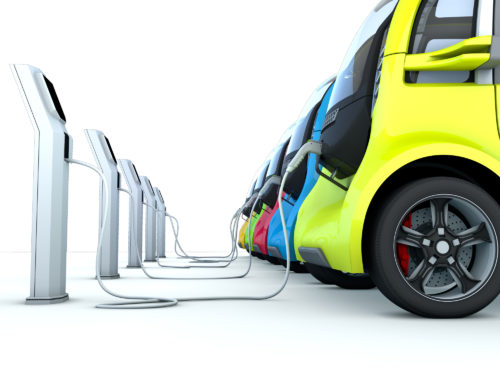
Don’t Start Your Engines: EVs Are off to the Races
Summer is generally a time for long weekends and vacations, but the electric vehicle juggernaut doesn’t share this proclivity to pause. Vehicle manufacturers are quickly pivoting to the rapidly emerging electric vehicle (EV) market. Volvo announced on July 5, 2017, that all of its new vehicles will contain an electric drive component by 2019. Following this statement, French president Emmanuel Macron declared that sale of petrol and diesel cars will be banned in France by 2040. Following Macron’s lead, the UK announced a similar ban of petrol and diesel passenger vehicles by 2040. In addition to toxicity charges, or “T-charges,” being debated for older, polluting vehicles, and clean air zones being planned for London, EVs are clearly gaining momentum in the UK. And in Norway, the market share of EVs leapt from 29 percent in 2016 to 42 percent in June 2017. Here in the U.S., as a result of the “Dieselgate” settlement, Volkswagen Group has launched its Electrify America unit, which is now determining how and where to spend $2 billion over the next 10 years to promote zero-emissions vehicles and build associated refueling and charging infrastructure.
Rising Expectations for Electric Vehicle Adoption
While these efforts won’t immediately overcome the inertia of the existing internal combustion engine regime, numerous forecasters recently raised their expectations for EV adoption. Chief among them is Bloomberg New Energy Finance (BNEF), which has raised its forecasts for global EV market share from 35 percent to 54 percent in 2040, and for market shares in France and the UK to 72 percent and 79 percent by 2040, respectively.
Meanwhile, the widely anticipated Tesla Model 3 is finally out, with 30 units delivered to Tesla employees on July 28. The no-frills Model 3, with a range of 220 miles, lists for $35,000, thus combining the popularity of Tesla with the utility of an affordable long-range vehicle. A vehicle of a similar class that is receiving far less media hype is the Chevy Bolt, which also offers affordability, at $36,620, and a long range of 238 miles. Buyers drove 1,642 Bolts off sales lots in June and 1,971 in July, putting the Bolt in first place in EV sales in the United States. EV sales in 2017 had reached 100,850 at the close of July, a 30 percent year-over-year gain over 2016.
Projections for 2040 sales may seem too distant to imply much about the present, but 2025 is just around the corner, and that’s when UBS expects EVs to achieve cost parity without incentives in the U.S. In Europe, UBS expects cost parity next year. And if BNEF is correct in anticipating more than 80 models of plugin hybrid and battery EVs to be available by 2020 in North America, it seems likely that the proverbial consumer-adoption S-curve is just beginning to approach its steeply climbing segment. By 2025, there could be 7 million EVs on the road in the U.S., and we’d be off to the races under electric power.
Rick Wallace Kenyon is an electrical engineering graduate student at CU Boulder focusing on the integration of renewable energy and storage solutions with the electrical grid.
Chuck Ray works in the North American utility space in business development roles with a focus on demand-side management and grid edge solutions.
